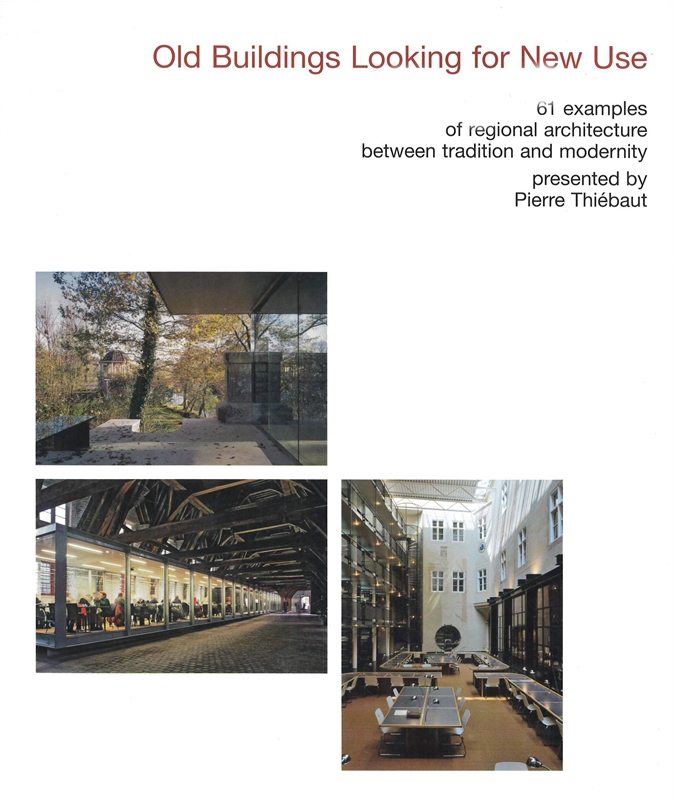-
A
- Ouvrages
- Documents
- Multimedia
-
Revues
- ADEME
- Architectures créer
- Archiscopie
- Belveder
- Cahiers de l'Anah
- Construction moderne
- D'a
- Energies renoulevables
- En vert et Avec vous
- Espace public
- France Bois Forêt
- Habitat Naturel
- La Maison écologique
- L'art des jardins
- Maisons Paysannes
- Matières
- Passion Architecture
- Plan Libre
- Traits urbains
- Qualité construction
- Urbanisme
- Architecture à vivre
- Matériaux / Ludothèque
- Parcours / Balades
- Sites utiles
Suivez-nous sur :
OuvragesH Old buildings looking for new use : 61 examples of regional architecture between tradition and modernity
The regions of Europe have an architectural heritage that is a thousand years old; today's challenge is to integrate this heritage into contemporary life in a sustainable way. From the first, architecture has always aimed to adapt to the way of life of the society it serves, but few buildings have come down to us intact and as they were originally designed. Since the second half of the 19th century the speeding-up of history has increased the rhythm of change and has led to continual restructuring, extension and conversion.
These changes have brought about the use of more and more innovative techniques, based on flexibility and reversibility, but the weight of materials, the time needed to implement these programmes, financial constraints and cultural compartmentalisation have deferred many of these projects and left us with a museum heritage frozen in time and quite unrelated to the original purpose of the buildings.
What can be done with buildings looking for new use - a fortress without an army, a château without a lord. a workshop without an artisan, a factory without workers, or even an abbey without monks or a church without a congregation? The rise of a new national or international style or the creation of innovative techniques does not necessarily damage the integrity of a place. Modern techniques and materials, such as glass and steel, have a transparency, lightness, flexibility and reversibility that make them highly suitable for integrative undertakings.
The examples presented in this book ail demonstrate a desire to be considered as "local" projects and to take their place in an evolutionary interpretation of history. Alter more than a century of conflicting debate on the subject of rehabilitation, it seems that the aims expressed in the Charter of Venice have borne fruit by giving rise to quality and personalised buildings that themselves are a contribution to this debate.SOMMAIRE
- Archaelogical heritage
- Aristocratic heritage
- Military heritage
- Religious heritage
- Institutional heritage
- Domestic heritage
- Farming heriage
- Craft heritage
- Industrial heritage
Cote : URBA0018
Thème(s) : Formes urbaines
Niveau d'autorisation : Public
Auteur(s) : THIÉBAUT Pierre
Référence : Edition Axel Menges
Date : Octobre 2007
Mots-clés : ARCHITECTURE ; TRADITION ; MODERNITE ; PHOTOGRAPHIE
Pagination : 267 p.
ISBN - ISSN : 978 3 936681 08 6
Z


